Intel Coffee Lake Gaming Results: i7-8700K Cheat Sheet
As usual, we have the deep-dive Coffee Lake coverage in our Core i7-8700K Review: Coffee Lake Brews A Great Gaming CPU review, but for those of you without the time to sift through all 13 pages, we've condensed all of our gaming results to give you a cheat sheet of sorts on Intel's new halo product.
Coffee Lake has arrived, and after nearly a decade of quad-core doldrums in Intel's mainstream desktop space, the company finally decided to bulk up its Core i7, i5, and i3 series. Intel added two more cores to each of the families and also increased the Turbo Boost frequencies to the highest an Intel chip has seen. Better yet, those increased resources come with a minimal price increase over the Kaby Lake models for the unlocked K-series chips, and the same price for the locked models. We can thank AMD for that.
We also have articles that compare Intel's full Coffee Lake lineup to Kaby Lake and a full breakdown of comparisons to AMD's beefy Ryzen stable.
And No, Coffee Lake will not run in Z270 motherboards.
So, if you whip out your wallet for Intel's six-core, 12-thread flagship and a new motherboard, what does that give you on the gaming front?
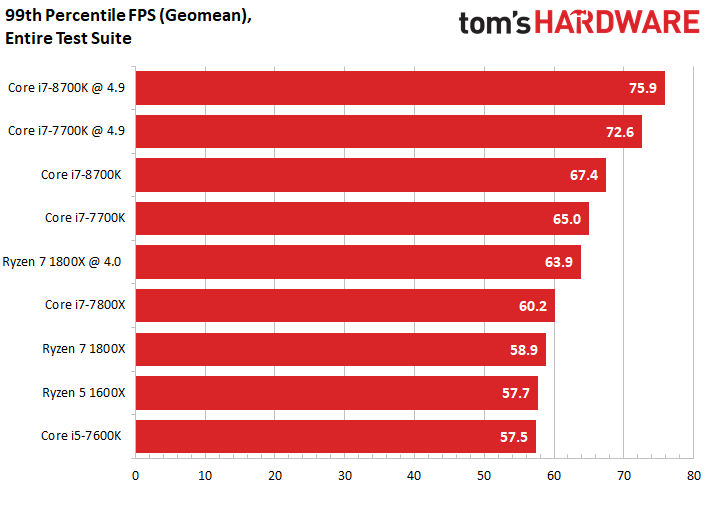

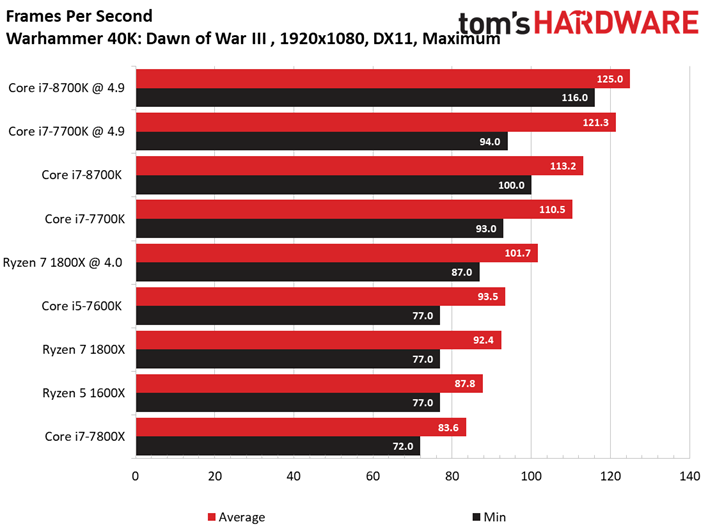
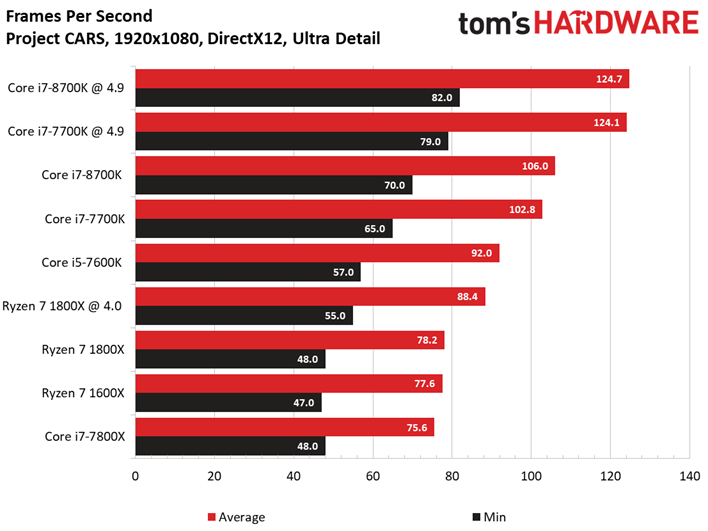
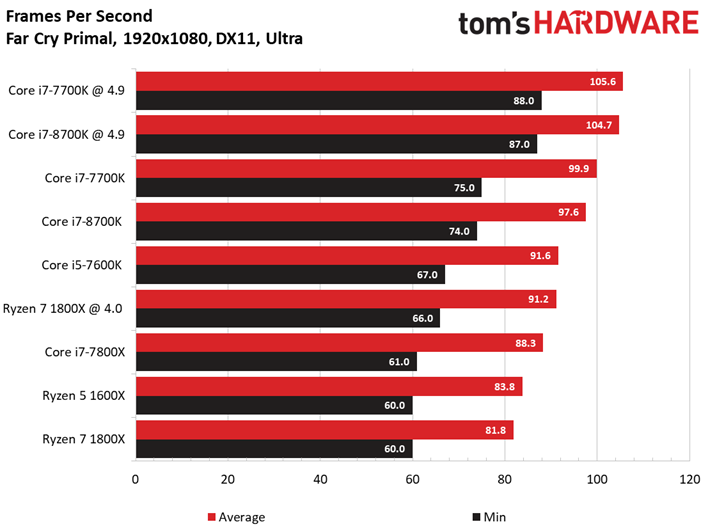


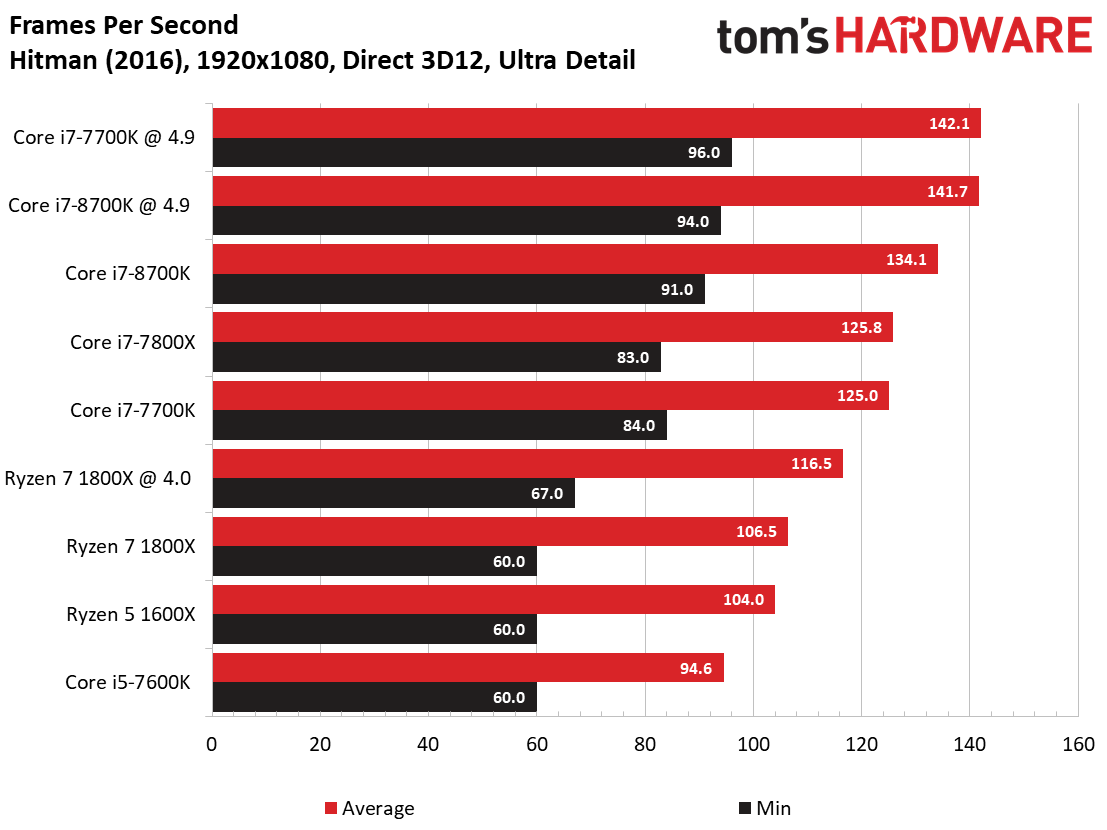
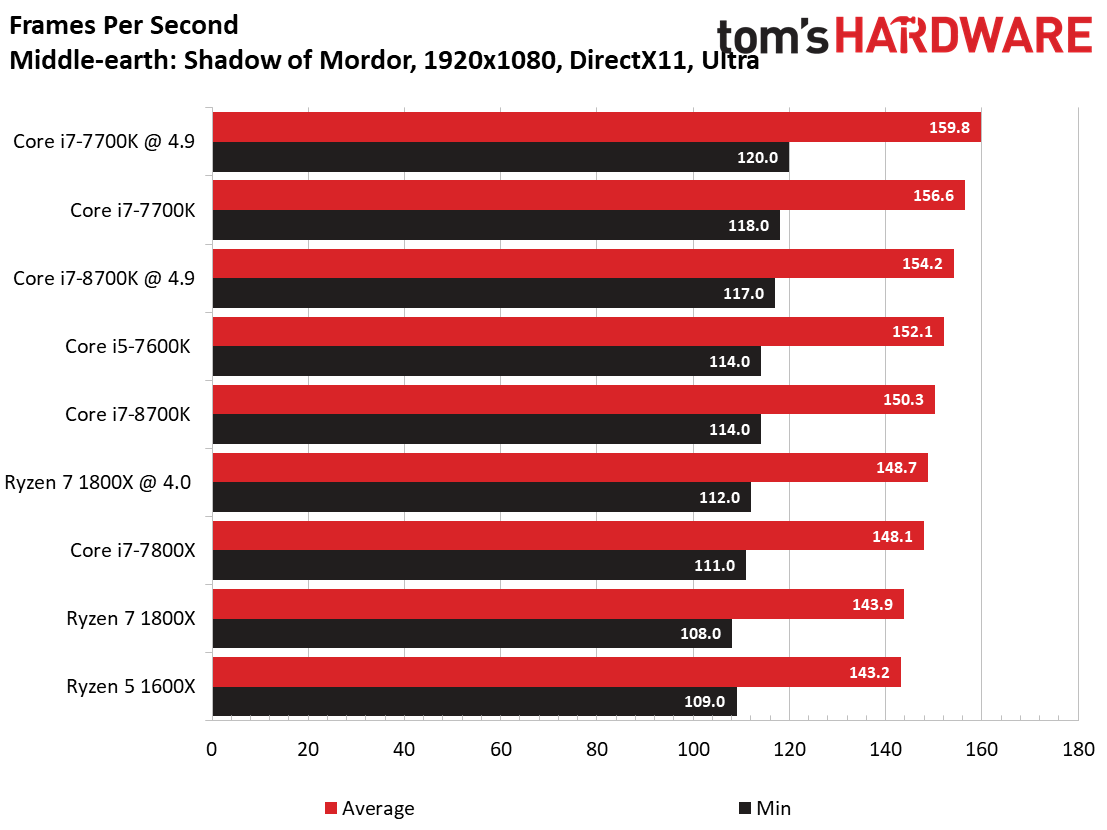
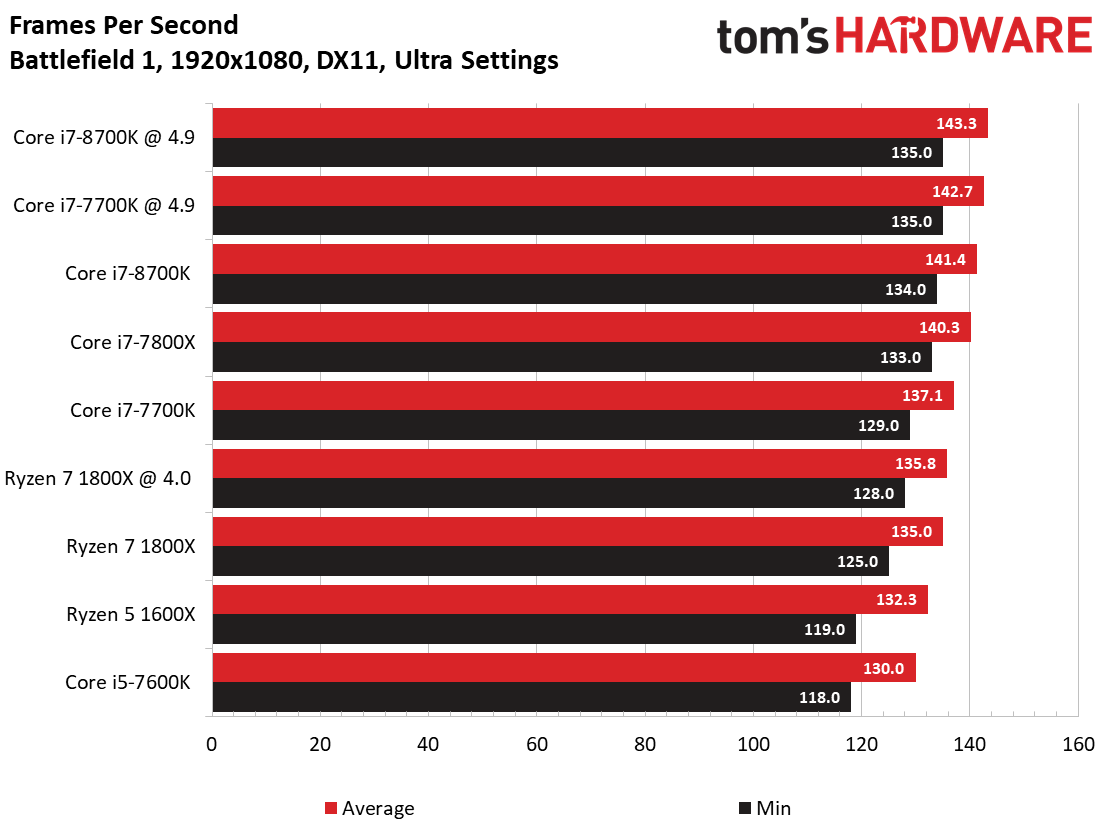
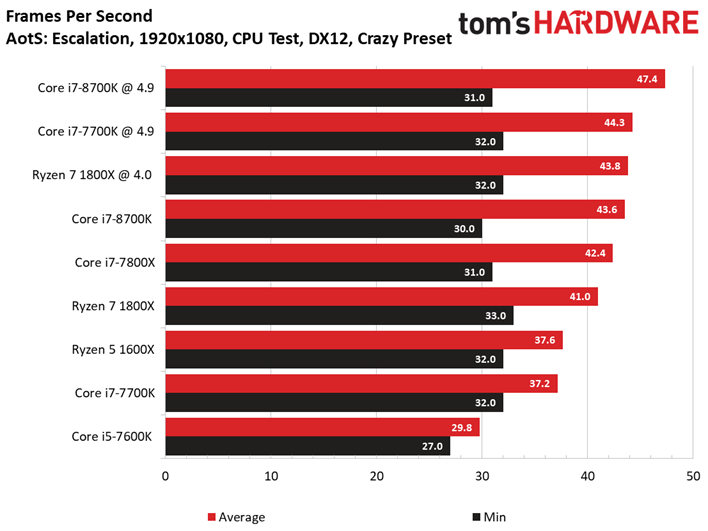
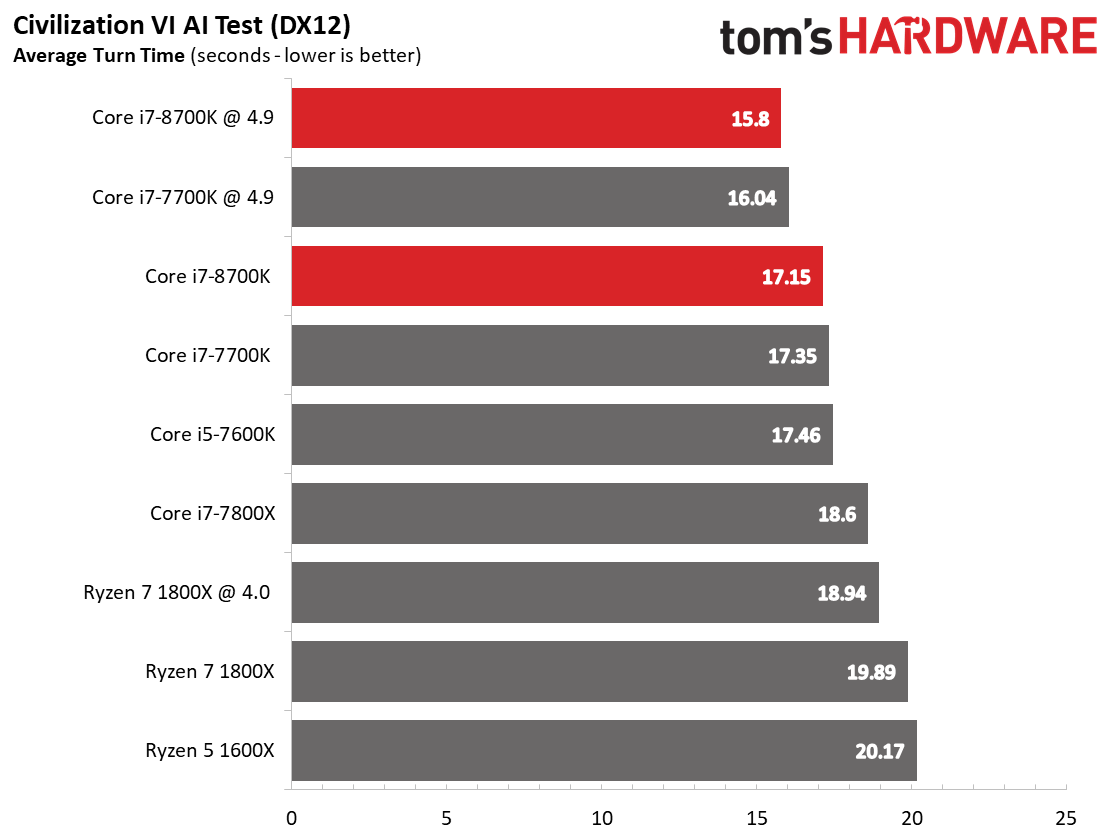
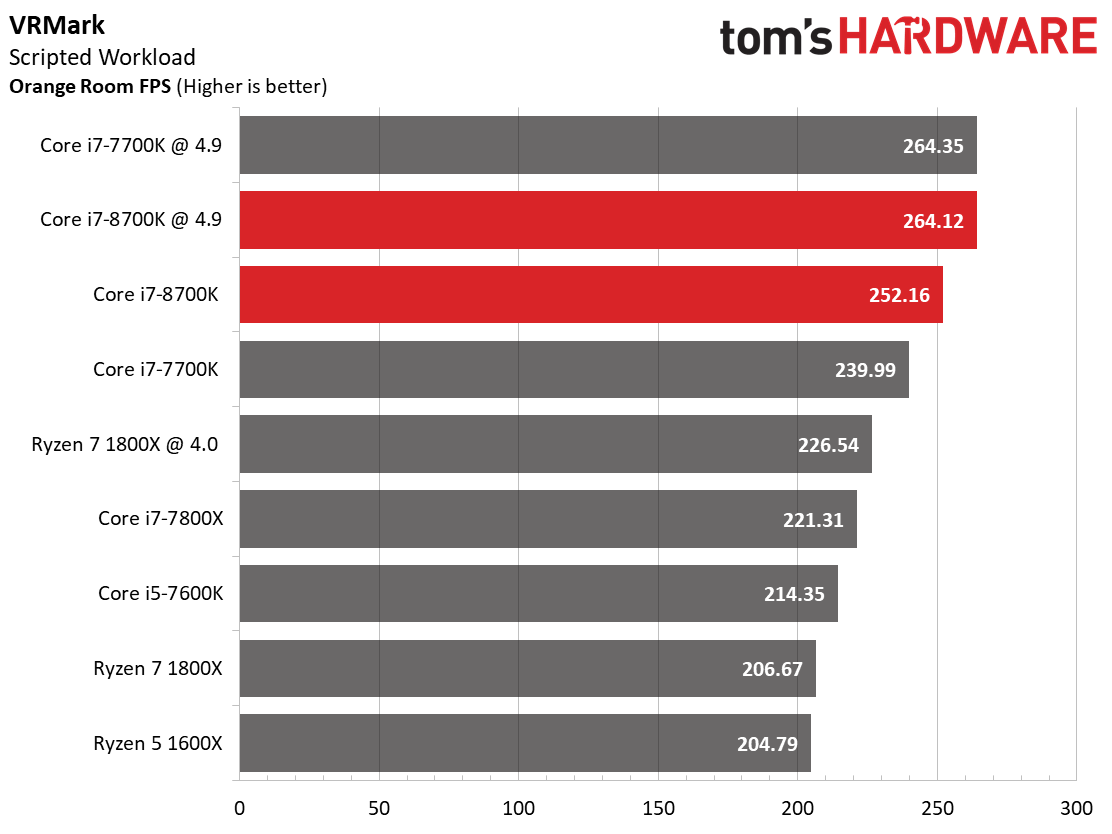
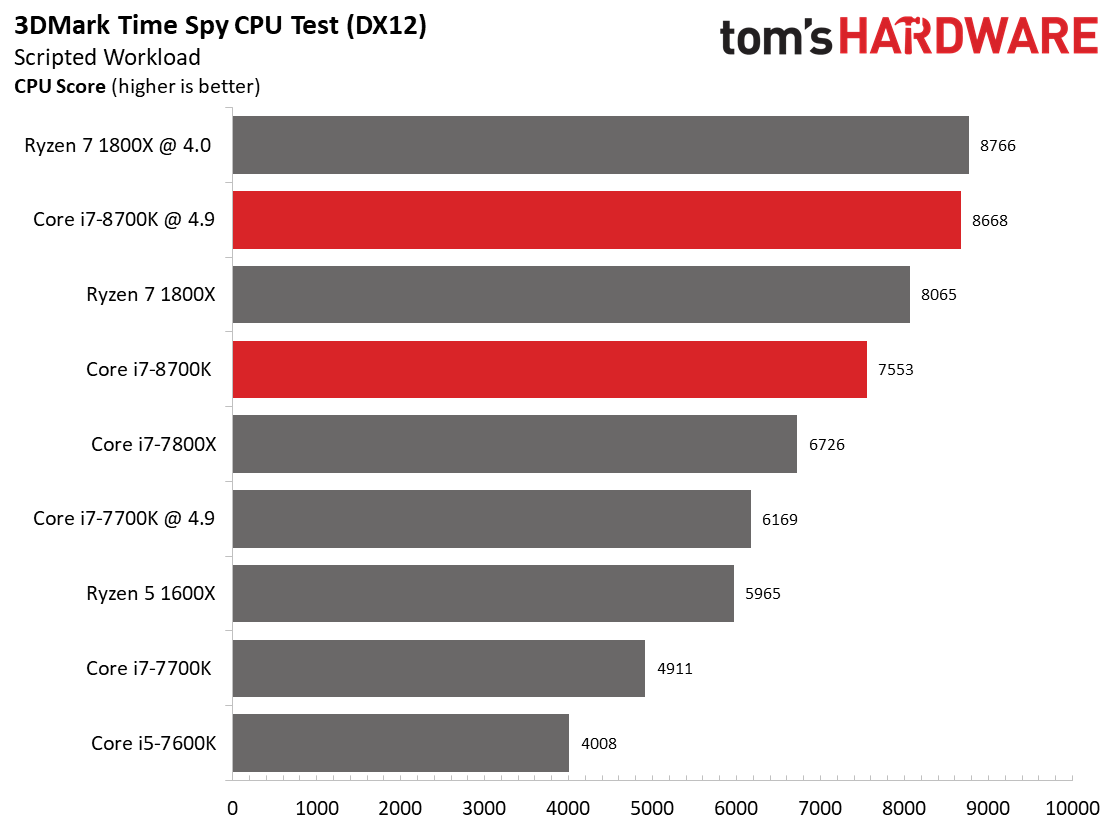

This. Our 99th percentile FPS chart provides a geometric mean of the results, converted into an FPS measurement, of all the games in our test suite. That single figure boils the story down pretty nicely, although we've also provided the performance results in each game so you can see how the Core i7-8700K fares in your favorite titles.
Despite a few missteps, the Core i7-8700K lives up to Intel’s claims. Although it doesn't beat the -7700K by a massive margin, the Coffee Lake flagship does deliver better performance in stock and overclocked form. AMD's Ryzen processors still offer competitive pricing and solid gaming performance, but Coffee Lake's gaming performance widens the gap considerably.
Get Tom's Hardware's best news and in-depth reviews, straight to your inbox.
Intel's additional cores speed up performance in threaded tasks, which will also be a boon for the streaming crowd, but the faster Turbo Boost (up to 4.7 GHz) maintains the company's advantage in single threaded titles, albeit with a few cases of a slight step back from the Kaby Lake processors.
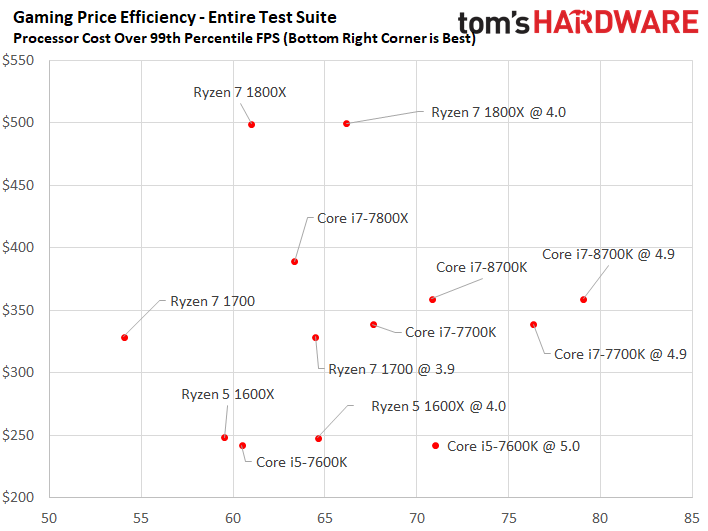

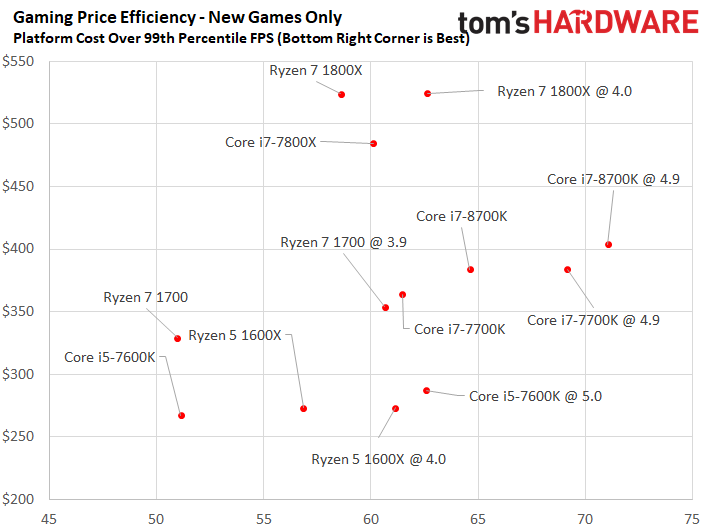

But bleeding edge performance is only part of the equation. We demand good value--a point AMD drove home with its speedy Ryzen lineup. Intel has obviously taken note, and the additional cores comes without radical price increases. Overall, the Core i7-8700K represents a solid value for those who demand the ultimate in performance, and the lesser Core i5 and i3 SKUs also look promising for the more pragmatic among us.
The Core i7-8700K is simple to overclock and won't require exotic cooling solutions unless you're chasing the bleeding edge, which makes it a fun chip for enthusiasts.
Altogether, the Core i7-8700K is the nimblest gaming chip we've tested, and it also offers surprising performance in our full suite of application tests. As we noted in the review:
Intel has its 10nm Cannon Lake processors coming in the second half of 2018, and AMD has a Ryzen refresh cycle coming next year. Knowing this, should you upgrade now or wait for the next wave of hardware? Due to the iterative nature of most updates, we rarely recommend jumping forward one, or even two generations. However, if you routinely find yourself running productivity workloads that might be served well by Core i7-8700K's extra cores, we could see replacing a quad-core chip with six cores. Gamers interested in maximum performance or streaming also stand to benefit, though in a world of single-GPU graphics configurations, you'd be hard-pressed to bottleneck an overclocked -7700K with even a GeForce GTX 1080 Ti (particularly at the high resolutions it's meant to drive).
The Core i7-8700K took home our Editor's Choice award. So feel free to take a dip in Coffee Lake if you've got the dosh--we doubt you'll be disappointed. We're working on testing the i5 and i3 models now, so stay tuned.

Paul Alcorn is the Editor-in-Chief for Tom's Hardware US. He also writes news and reviews on CPUs, storage, and enterprise hardware.
-
berezini.2013 sounds like soon to be the time to look for all the z270 platforms to be phased out which means price drops! good time to replace that backup pc in case your main one goes down.Reply -
variokas Hello TomsHardware, I think it is time to provide 1440p gaming tests next to 1080p.Reply
Sincerely,
2017 -
acosta.87 Reply20247168 said:Hello TomsHardware, I think it is time to provide 1440p gaming tests next to 1080p.
Sincerely,
2017
There's barely any difference in performance between all different processors at 1440p so it's got nothing to do with it being 2017 or whatever. -
Lucky_SLS ^ yeah, 2k and 4k testing makes sense only in gpu testing where the load on gpu increases with res. That's not the case in cpu. So a 1080p review where we can see the max bottleneck is good.Reply
Also, this hasn't been pointed out, the min fps in most of the games is more when compared to 7700k. This was also one of the traits that ryzen exhibited when it was compared. So kudos to those 2 extra cores?
And finally, the best pc build competition would have been more interesting if it was conducted next month :( -
velocityg4 Reply20247357 said:
There's barely any difference in performance between all different processors at 1440p so it's got nothing to do with it being 2017 or whatever.
It would be nice for some perspective.People are left with the perception that there will be a huge difference in gaming between these CPU. While there will be if you are using a GTX 1080 Ti at 1920x1080 and have a 165hz monitor.
In most scenarios. Such extremes won't be met. Like they'll have a GTX 1060 or be playing at 2560x1440 or 4K. -
Isokolon Yeah but that's not a proper benchmark. A proper benchmark for CPUs should be at full HD or lower. I want to see which CPU performs best.Reply
Of course they could do 4k Benchmarks with a Rx580 as well. This would then show that an i3, heck even a Fx6300 is just as powerful as an i7. This defies the meaning of benchmarks.
These are CPU benchmarks. It's the power of the CPU that should be shown not the bottleneck of the GPU. This is showing you how many frames your CPU can calculate.
If someone wants to know which CPU to pair with his GPU, he should look up how many frames his GPU can deliver and pick the CPU accordingly or - and yes that's a thing - look up some gaming tests, where they test several tiered hardware systems for a specific game.
You wanna know how many frames a CPU can calculate @1440p when it's able to output 140fps @1080p? Answer is around 140fps.
No sense in showing this kind of nonesense, just makes the review seem unprofessional -
lonewoofe I don't understand why ANY reviewer would say "try it" when everyone and their little brother knows this was merely a paper launch and there are not items available to try. I get it, it is a business. Intel is not our friend. Neither is AMD. But at least the reviewers and websites how claim to do these articles and rely on viewership (to an extent) ought to PRETEND to be our friends and be frank. Try it! BUT you can't try it yet!!Reply -
antonio.cue.gervas There are benchmark that provide data, then there are benchmarks that provide information. Journalists should know the difference. If you want benchmarks at 640x480 be my guest, but it's irrelevant data to me.Reply
The absence of the ryzen 1700 from the price/performance charts doesnt help. -
Lucky_SLS ^ exactly what we are also saying.Reply
2k res doesn't show the bottleneck of the cpu. Ur gpu would bottleneck before that. Understand more about the subject before commenting next time :p -
velocityg4 Reply20248239 said:Yeah but that's not a proper benchmark. A proper benchmark for CPUs should be at full HD or lower. I want to see which CPU performs best.
Of course they could do 4k Benchmarks with a Rx580 as well. This would then show that an i3, heck even a Fx6300 is just as powerful as an i7. This defies the meaning of benchmarks.
These are CPU benchmarks. It's the power of the CPU that should be shown not the bottleneck of the GPU. This is showing you how many frames your CPU can calculate.
If someone wants to know which CPU to pair with his GPU, he should look up how many frames his GPU can deliver and pick the CPU accordingly or - and yes that's a thing - look up some gaming tests, where they test several tiered hardware systems for a specific game.
You wanna know how many frames a CPU can calculate @1440p when it's able to output 140fps @1080p? Answer is around 140fps.
No sense in showing this kind of nonesense, just makes the review seem unprofessional
The problem is. I know what I'm reading and you know what your reading. We know how to interpret the data. That is great for the knowledgeable user. The techie if you will.
Most people don't understand this. If Toms was a trade journal just read by techies. Simply knowing the full capabilities sans bottlenecks would be great. However, Toms is also for your average Joe to know what to buy. They simply don't understand what they are reading. Many can end up wasting money on a CPU they don't need when it would be better spent on a superior GPU. Thinking it will improve performance. When they simply didn't properly comprehend what they read. Without realizing their mistaken impression.
While more detailed articles attempt to explain this. For the average person. They may as well be written in Greek. As they say. A picture is worth a thousand words. A few bar graphs listing QHD and 4K will have more impact than a 100-page explanation.
Sure, in the long run the better CPU will ultimately give a longer useful life. That doesn't help them when they just want the best gaming experience they can get on their new QHD or 4K monitor.
I'm not suggesting every CPU + GPU combo possible. As the standard for reviewing a GPU is to pair different GPU makes and models with the same base Rig. Then list benchmarks at 4K, QHD and HD. Do the same with the CPU. Keep everything as close to the same as possible RAM, GPU, SSD, &c. Just change up the CPU and motherboard. That way users could visually see that at 1920x1080 there is a big difference, at QHD there is very little difference and at 4K there is virtually none.
